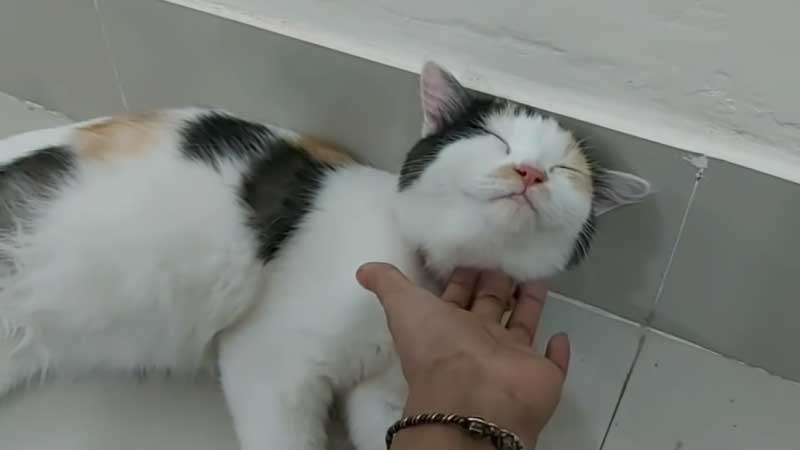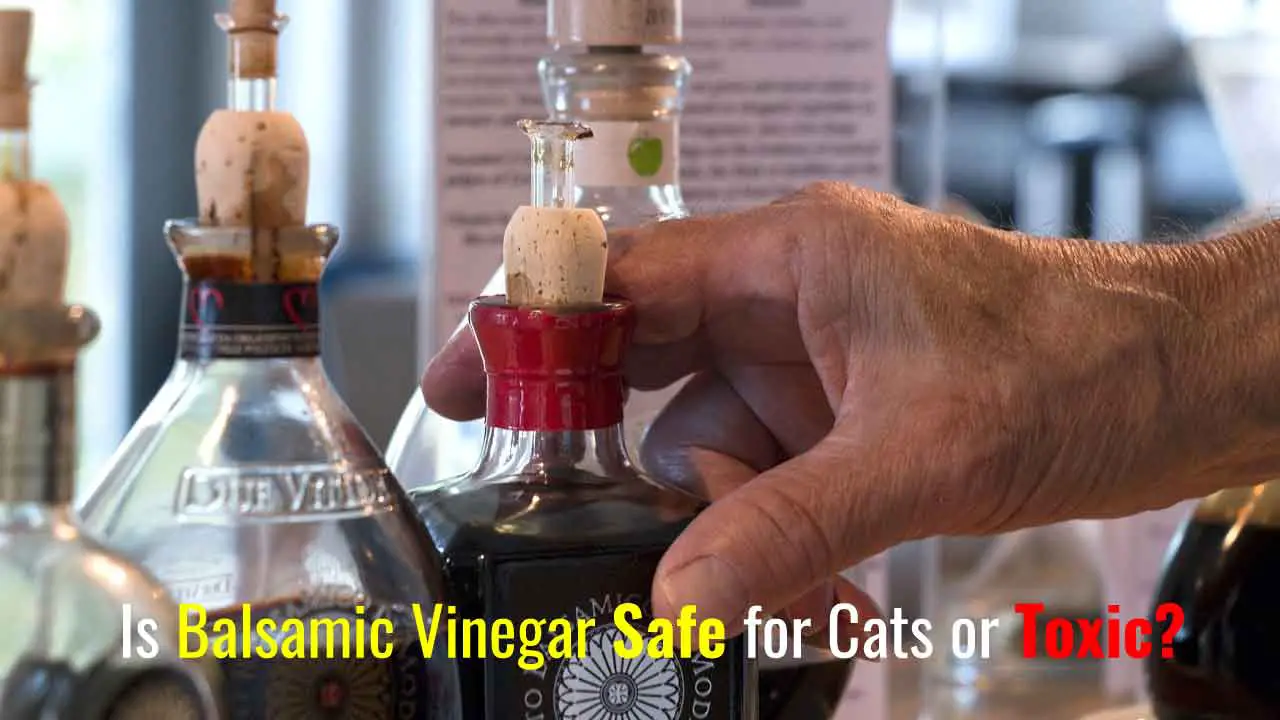If you’ve found yourself on this page, chances are you’re scratching your head about a pretty common kitty conundrum: why some kittens not interested in weaning. It’s a puzzling phase for many kitten parents, and trust me, you’re not alone in this.
Weaning is an essential step in a kitten’s journey to cat-hood, but sometimes our furry little friends have their own timelines and preferences.
So, why are some kittens not keen on weaning? The short answer is that their refusal can stem from various reasons, be they health issues, behavioral tendencies, or simple preference.
In this comprehensive guide, we’ll uncover the reasons behind their hesitation and offer tips to help smooth the transition. Ready to unravel the feline weaning riddle? Let’s pounce right in!
Table of Contents
Let’s First Understand Kitten Development

At first, understanding this development is crucial for any cat parent, especially when it comes to the weaning process. To make things a bit simpler for you, we’ve charted out the key turning points in a kitten’s life, breaking down their growth journey into bite-sized chunks.
Kitten Development Milestones
| Age | Developmental Stage | Key Activities & Changes |
|---|---|---|
| Birth to 4 weeks | Infant Phase | – Almost exclusive nursing from the mother – Rapid weight gain – Opening of eyes and ears, beginning of mobility |
| 5 to 8 weeks | Transition Phase | – Introduction to solid foods – Increased playfulness and exploration – Continued nursing but decreasing reliance |
| 9 weeks and beyond | Weaning Completion | – Full transition to solid food – Gaining independence from the mother – More active play and socialization |
In the early days, kittens rely entirely on their mother’s milk, a rich source of nutrition and antibodies. As weeks go by, their adventurous spirit (and appetite) expands, ushering in the introduction of solid foods. By the time they hit the 9-week mark, these kittens are typically well on their way to being fully weaned, embracing their newfound independence with gusto.
You may also like: Cats with Mustaches: Names, Breeds, Memes, and Images
Kittens Not Interested in Weaning: Reasons Why Kittens Might Refuse Weaning

Every kitten, much like a human child, has its own unique personality and growth pace. While many kittens transition from mother’s milk to solid food without much fuss, some might take a little longer, showing resistance to the weaning process. If you’ve been wondering, “Why are my little kittens not taking to solid foods?”, you’re in the right place. Let’s explore some common reasons behind this reluctance.
Health Issues
- Digestive Problems: Just as we might stay away from certain foods when our stomachs are upset, kittens can resist new foods if they’re experiencing digestive discomfort. Introducing solids can sometimes lead to constipation or diarrhea, making the whole process less appealing to them.
- Illnesses: If a kitten isn’t feeling well due to a cold, infection, or any other illness, it might show less interest in food overall. Always check for signs of illness, such as lethargy, nasal discharge, or persistent crying.
Behavioral Reasons
- Attachment to the Mother: Some kittens are mama’s boys and girls! They might simply prefer nursing because of the comfort and bonding it provides. It’s not just about the food; it’s about the warmth and safety that come with being close to their mother.
- Fear of New Food Textures: Imagine being introduced to a completely new type of food. It might feel strange, right? For kittens, the transition from liquid to solid can be a sensory overload. The unfamiliar textures can be off-putting at first.
Environmental Changes
- Moving: If you’ve recently shifted to a new home, your kitten might be feeling disoriented. Familiarizing them with a new environment while also transitioning their diet can be a bit overwhelming for the little one.
- New Family Members: Whether it’s a new human baby, another pet, or a visitor, any change in the household dynamic can affect a kitten’s behavior, including its eating habits.
- Other Disruptions: Even minor changes, like rearranging furniture or loud noises, can stress kittens out, causing them to retreat to the familiarity of nursing.
Remember, every kitten’s journey is unique, and what’s crucial is ensuring they feel loved and secure throughout their growth phases.
How to Wean a Stubborn Kitten: Tips for Successful Weaning

When the time comes for your kitten to make the leap from breastfeeding to nibbling on solid foods, the transition might not always be as smooth as you’d hope. However, with the right techniques, patience, and a sprinkle of love, you can make the weaning process a delightful experience for your furry friend. Here, we’ll share some tried-and-true tips to ensure a successful weaning journey.
Read Also: Why Does My Cat Eat His Fur After It Falls Off
Comparison of Kitten Weaning Techniques
| Technique | Description | Benefits |
|---|---|---|
| Introducing Wet Food | Start by offering high-quality wet kitten food. Look for brands with high protein content, and preferably those that list real meat as the first ingredient. | – Easier transition as wet food is softer – High moisture content aids in hydration |
| Importance of Hydration | Always ensure fresh water is available. While kittens still nursing will get a lot of their hydration from milk, introducing them to a water bowl is crucial. Also, consider using kitten milk replacer for added nutrients. | – Prevents dehydration – Supports overall health and digestion |
| Gradual Transition | Instead of an abrupt switch, consider mixing a bit of mother’s milk or kitten milk replacer with the wet food. This creates a familiar taste, making the new food more appealing. | – Eases kittens into the new diet – Reduces digestive disturbances |
Further Insights:

Step 1: Introducing Wet Food:
Start with brands known for their high-quality ingredients. Always check the label and ensure the primary ingredients are wholesome and nutritious. Texture matters! Some kittens might prefer pate-style foods, while others may lean towards chunkier options. Experiment to find out your kitten’s preference.
Step 2: The Importance of Hydration:
Introducing a water bowl early on is essential. Place it in a location easy for the kitten to access and change the water daily.
Kitten milk replacer can be a fantastic supplement, especially if the mother’s milk is unavailable. It provides vital nutrients and makes for a smoother transition to solids.
Step 3: Gradual Transition:
Begin with a mixture that’s predominantly mother’s milk or milk replacer, and then slowly adjust the ratio over time, increasing the amount of solid food. Monitor your kitten’s reaction. If they show signs of digestive distress, slow down the transition.
With these tips in your arsenal, you’re well-equipped to guide your kitten through this crucial phase. Remember, the key is patience and observation. Every kitten is unique, and adjusting your approach based on their needs will pave the way for a successful weaning process.
FAQs on Kittens and Weaning
Why is my kitten not showing interest in solid food?
It’s not uncommon for kittens to show some hesitation when introduced to solid foods. Possible reasons include:
- Health Concerns: Illnesses, infections, or digestive problems can reduce a kitten’s appetite.
- Behavioral Issues: Kittens might have a strong attachment to nursing from their mother or could be wary of the unfamiliar texture of solid foods.
- Environmental Changes: Sudden changes in their surroundings, like moving to a new place or introducing new family members, can affect a kitten’s comfort level with new experiences, including trying solid foods.
Solutions: Monitor your kitten’s health and consult a vet if you suspect any health issues.
Gradually introduce solid foods by mixing them with mother’s milk or kitten milk replacer to make the transition smoother. Ensure a calm and consistent environment for your kitten during the weaning process.
How long does the weaning process typically take?
The weaning process usually begins around 4 weeks of age and can continue until the kitten is 8 to 10 weeks old. However, the duration can vary depending on individual kittens. Some might transition faster, while others take their time.
Can kittens still drink milk after being weaned?
After weaning, many cats become lactose intolerant, meaning they can’t digest the lactose present in milk properly. This can lead to stomach upsets or diarrhea. While some cats can tolerate milk in small amounts, it’s generally safer to provide kittens with water or specially formulated cat milk if they still show interest in drinking milk.
What are signs that a kitten is ready for weaning?
Signs that a kitten is ready for weaning include:
- Developmental Cues: By 4 weeks, kittens start developing baby teeth and show an interest in nibbling on solid objects.
- Decreased Nursing: The kitten might nurse less frequently or for shorter durations.
- Curiosity about Solid Food: They might show interest when observing their mother or other cats eating.
How do I ensure my kitten gets the right nutrients during the transition?
Ensure you:
- Offer high-quality kitten food that is rich in protein and other essential nutrients. Always check the label.
- Avoid giving human food, as some ingredients might not be safe or nutritious for kittens.
- Consider using a kitten milk replacer as a supplement, especially if there’s limited access to the mother’s milk.
Is it normal for kittens to lose weight during weaning?
Some minor weight fluctuation can occur during the weaning process due to changes in diet and feeding frequency. However, significant weight loss or a kitten that seems lethargic or uninterested in food for an extended period could be a cause for concern. It’s essential to monitor their weight, ensure they are eating adequately, and consult a veterinarian if you notice any drastic changes or other concerning symptoms.
Final Verdict
Kittens not interested in weaning is undoubtedly one of the most important phases in a kitten’s life. It’s the bridge between their infancy and their journey into vibrant cat-hood. While the process might come with its fair share of challenges, from kittens showing resistance to adapting to environmental changes, it’s crucial to remember that every kitten is unique. Their pace, preferences, and reactions will vary.
Guiding your feline friend through this transition requires a blend of patience, observation, and love. By understanding the various developmental stages, recognizing potential reasons for resistance, and employing tailored weaning techniques, you can ensure a smoother, stress-free experience for both you and your kitten.




